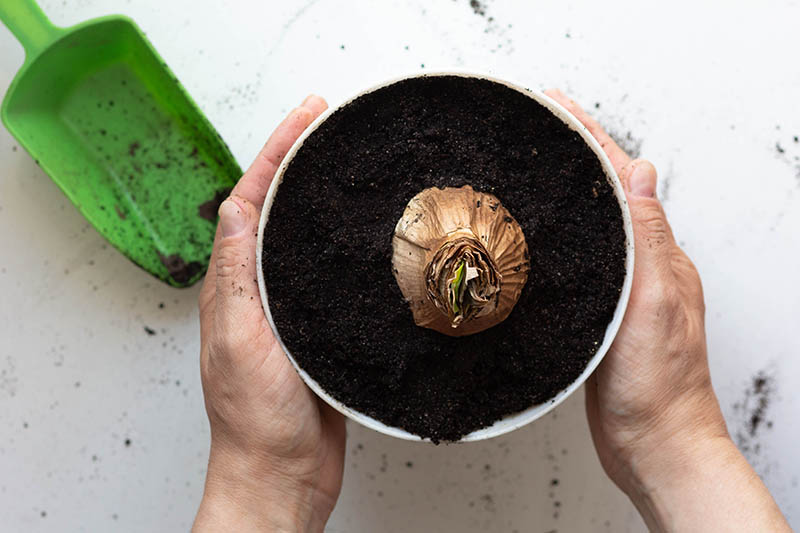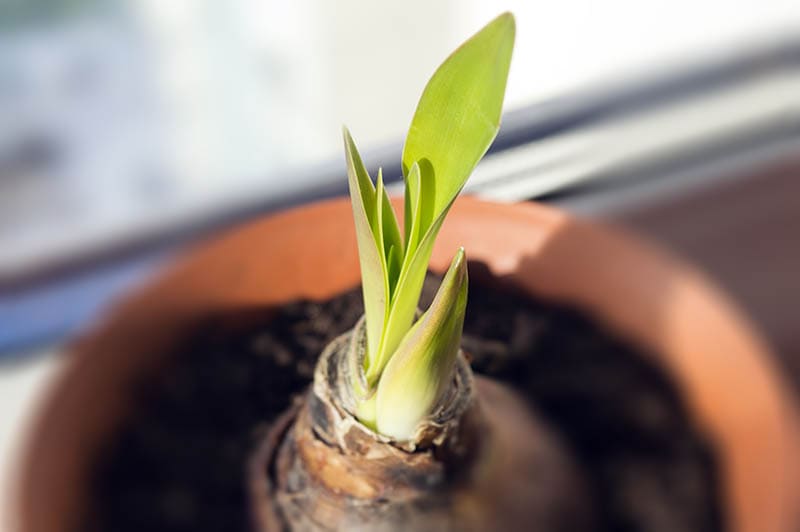Is My Amaryllis Bulb Dead or Dormant? (4 Signs to Look For)
-
Pete Ortiz
- Last updated:

Amaryllis bulbs are one of the easiest bulbs to grow and maintain. You simply plant the bulb in good potting soil, water it regularly, and provide it with adequate light. Most varieties will bloom in 6–8 weeks after planting, while some can take up to 10 weeks. They also bloom with greater vitality and beauty compared to most flowers.
One of the most prevalent challenges people face when handling an amaryllis bulb is determining whether it’s dormant or dead. The signs for death and dormancy may look similar, making it challenging to tell the difference.
What Does a Dead Amaryllis Bulb Look Like?
The wait between planting the bulb and waiting for it to bloom is long enough for most gardeners. Most of them are left wondering if the bulb is dormant or dead, and an inexperienced gardener may even throw it out if they give up on waiting for it to bloom. That’s why it’s important to take time and evaluate your new bulbs before you plant them. Here are some signs that can tell you whether your amaryllis bulb is dead:
The 4 Signs That Your Amaryllis Bulb Dead
1. Mushy Bulb
Amaryllis bulbs are usually plump and firm even in their dormant state. This indicates they have enough stored food/energy to support growth and full bloom. A squishy bulb, on the other hand, indicates the opposite. The bulb could be squishy due to rot. It most likely will not grow even under the right conditions. However, split and loose or missing sections are fine and may encourage rooting.

2. Bad Odor
You should discard any bulb with a foul odor and mold growing on the surface since that’s a clear sign that it has already started to rot. Planting it along other plants can spread root rot and kill healthy bulbs when they come into contact. Bad odor and mold sometimes happen when the bottom of the bulb is affected by a bulb-destroying fungus during the growth period. If you are not sure about the source of the bad odor, consider consulting a plant physician.
3. Rotten Bulbs
A rotten amaryllis bulb cannot be salvaged. Bulbs that are rotten inside will float in water since they are lighter than healthier bulbs. To figure out which bulbs are rotten, fill a bucket or any container with fresh water and toss in your bulbs. Discard the ones that float. If you don’t intend to plant the healthy bulb immediately, ensure you dry them outside to prevent rot and mold from developing.

4. Dead or Dry Bud
Slice the bulb or bulbs open in the center from the tip to the basal plate, preferably with a sharp and clean blade. If the flower bud at the center of the bud is dried up or brown, it is dead or nearly dead, and it will only produce foliage that year if at all it does. When done correctly, slicing the bulb does not stop it from sprouting and growing.
You can also do this with bulbs that were healthy when planted but have yet to come up. This allows you to identify the root cause and avoid making similar mistakes in the future.
Planting and Caring for Amaryllis Bulbs
Most amaryllis bulbs come pre-potted if you buy them from the nursery. In this case, the first step is ensuring the pot has enough drainage holes. The pot should also be twice as tall as the bulb, so there is enough space for root development.
If you find one that has already started growing, the better—all you have to do is give it enough water and natural light. If the amaryllis bulb has not started growing, you can do a few things to get it growing.
Replant the bulb, so it sticks out of the potting soil, and leave an inch between the top of the pot and the topsoil to prevent the water from spilling out when watering. Ensure you use a potting mix instead of garden soil because the former will not drain properly. Turn the pot periodically as the plant grows to encourage the lower stalk to grow correctly, and water it sparingly until you see about 2 inches of growth.

How to Get Amaryllis to Rebloom?
While most people treat amaryllis bulbs like annuals, you can get them to rebloom the next year. You can also do this with a dormant bulb. However, there are certain conditions that you need to maintain to get them out of the dormancy stage and allow them to grow and bloom.
- Cut the flowers off as they fade to prevent seed formation. Allowing the seeds to form depletes the bulb’s resources and reduces its ability to bloom in subsequent years. Once the flower stalk starts turning yellow, remove it. The flower stalk photosynthesizes and creates food stored in the bulb for future growth. You can also leave the leaves on your bulb because they create food so the plant can bloom again.
- One of the critical factors is temperature; amaryllis flowers need to be exposed to cool temperatures (45 to 50°F) for a while. You can do this by forcing your plant into a pseudo dormancy by placing them in a cool and dark location.
- The bulb has to go through a resting period of about 8 to 12 weeks before it can bloom again. Don’t water the bulb during this time unless you suspect it’s dying. The yellow and dry leaves can be removed without adversely affecting the bulb.
- Inspect the bulb regularly when it’s resting for any signs of growth. When it grows new shoots, place it in an area with sunlight and resume watering and fertilizing. If it doesn’t grow on its own, you can force new growth by watering the soil and moving it to a sunny location. Flowers usually develop after about 4–6 weeks. The plant can be taken outdoors once there is no risk of frosting.
Amaryllis plants are from arid climates, and they should be watered sparingly. One of the most common problems most gardeners have with caring for an amaryllis bulb is overwatering. Keeping the bulb constantly wet will cause it to rot and eventually kill the plant. To ensure it dries out between soakings, pour water over the top until it comes out of the drainage holes, and dump out the excess water at the top so that they are never soaking in it.
If you often find yourself overwatering them, consider getting a moisture gauge to help you out.

Saving Amaryllis Bulbs
Amaryllis bulbs are readily available on the market, and most people throw away the old bulb after the first bloom. However, if you want to replant your current bulb during the next season, or you’re afraid it won’t survive the long winter outside, you can save it. Dig up the bulb after all the foliage has died back and store it in a dark, cool space for around two months.
You can plant it after winter and brighten your home with colorful blooms. It’s vital to note that most bulbs die off after 4–5 years, and the offsets they produce will not bloom when they are young or too crowded.
Conclusion
The signs for death and dormancy may look similar in Amaryllis bulbs, and this can make it challenging to tell the difference. Hopefully, our article has helped you spot the difference and give you some useful tips on caring for your Amaryllis plant.
Featured Image Credit: Tatiana Foxy, Shutterstock
Contents



